Cotton is probably one of the most widely used summer knitting fibres and for good reason. It is available in a variety of qualities, blends and types of yarn. It is softer on the hands than linen and it is easy to knit with even on hot days.

However, cotton production also uses a lot of water and as a vast amount of our clothes are produces using cotton it has a big impact on the environment including degradation of soil fertility. For example, according to WWF it can take more than 20,000 litres of water to produce 1kg of cotton which is approx. as much cotton as is needed for one t-shirt and one pair of jeans. I wasn’t aware of his before I started the research for his post but it has definitely had an impact on my perception of cotton as an amazing summer knitting fibre. Not only is the impact on the environment big but as usual it also goes hand in hand with an impact on the communities and their living conditions.
Cotton, like linen, has a long tradition of being used for textiles. For example, it is estimated that it has been used in some Latin American countries for around 5,000 years. But it has also bin in use in Asian and Middle Eastern countries such as China, Pakistan and Egypt since approx. 3,000 B.C. It reached Western Europe around 1200 years ago and has been cultivated since around the 1400 in Mediterranean countries. Developing innovations for cotton production played a huge part in the Industrial Revolutions of Great Britain and America for example.

Today the biggest cotton producing countries include China, India, the US, Pakistan, Brazil and Uzbekistan.
How cotton is made
Growing cotton and producing yarn from it is a lengthy process. Cotton has a long growing season and it can take up to 7 months in some regions. As such the time for planting seeds depends on the area but it needs a sunny yet moist growing season. As much water as is required to grow cotton and overabundance due to heavy rainfall is not beneficial.
Today most planting of seeds is done with the help of machines. They are able to open a small furrow, plant the seed and cover them. Seeds are planted not too low in the earth. The deepest is just over 3 cm (about 1.25 in). Approx. 6 weeks flower buds appear which develops through various stages of into a flower. This flower falls away and leaves a small ovary. This ripens and grows into a cotton boll which needs to mature for up to 80 days. After ca. 10 weeks the layers of cellulose have built up so much that the boll splits apart revealing creamy coloured cotton.
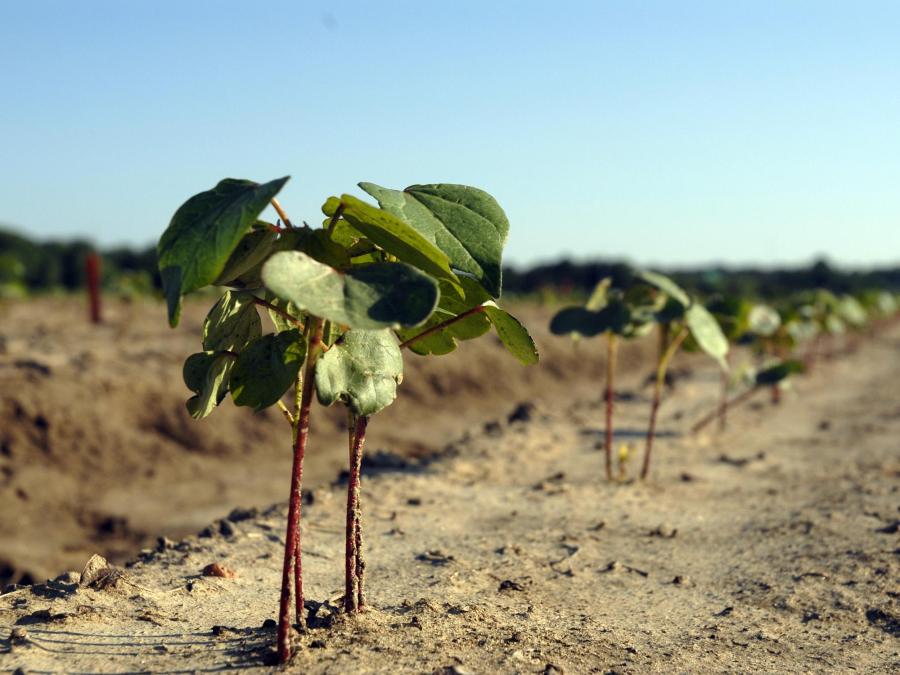
As cotton is relatively sensitive and prone to be plagued by insects the process of growing cotton tends to involve the use of insecticides and pesticides as well as a number of fertilisers which, as mentioned above, has an impact on the environment. According to some estimates, in the US, about 151 g of chemicals are used to produce one pound of processed cotton (Source).
The next step is to remove the leaves, this step is called defoliation, in order to prepare the cotton bolls for harvesting by machines, as is the case in the US. Often this process is done with the aid of chemicals. The machine used to harvest cotton is called a cotton picker and it moves through the field and are able to cover up to 8 rows at a time. The harvesting needs to happen after the morning dew dries and before it settles again in the evening to ensure the amount of moisture on the plants is not too high.
Next the cotton is cleaned from dirt and seeds. This is done by a machine called gin and which, by pulling the fibres through wire ribs, separates the seeds from the fibre. Afterwards cotton is pressed into bales this allows easy storage and transportation to mills for spinning.
At the mills, cotton from various bales are mixed together to provide a uniform blend of fibres. Next the cotton is fed through cleaning and carding machines to separate and aligned into a thin web, which in turn is made into a sliver (a soft, rope-like strand).
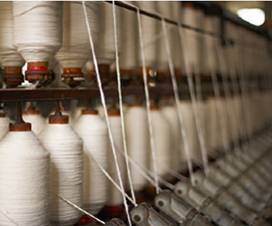
The slivers are then drawn out and a some twist is added with the use of roving frames. Ring spinning machines then draw the roving out further and add more twist which result in thinner and tighter yarn which can then be used for weaving and knitting.
Pro and Con
As mentioned above cotton crops require a lot of water and chemicals which have a big impact on the environment and as cotton is a fibre used in a lot of textiles world wide the impact is has are not small and it might be worth looking out for alternatives that have less impact on the environment.
However, for the same reason cotton is an easy to access fibre and as it is available in various quality there is cotton yarn available for every budget. Cotton takes dyes fairly well and cotton yarn is available in a vast array of colours. Additionally, cotton can be machine washed which makes caring for it easy and also makes it a good yarn to use for baby items.
Cotton yarn and cotton blends
Below you find a small selection of cotton yarn and cotton blends. The ones displayed here are either ones I have worked with or from companies I have used other yarns from or have only heard good things about. The list is not exhaustive in the slightest and it is certainly worth searching the internet for more.
Wool and the Gang Shiny Happy Cotton
Blue Sky Fibres Organic Cotton
Holst Garn Coast (Merino and Cotton blend)
Manos del Uruguay Serena (Alpaca and Cotton blend)
Cotton pattern ideas
There are some amazingly beautiful knitting patterns using cotton yarn or blends out there. Here is a selection of some of my favourites

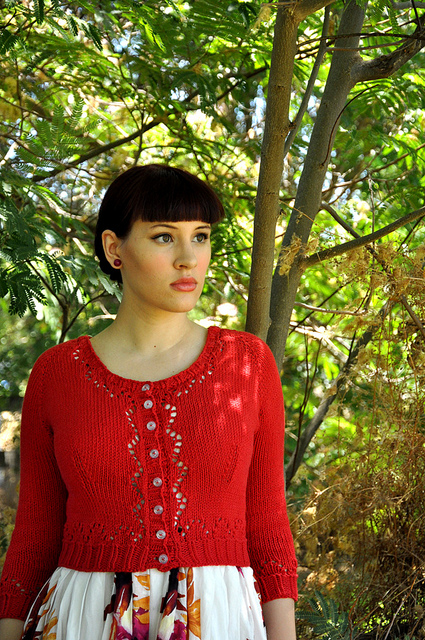




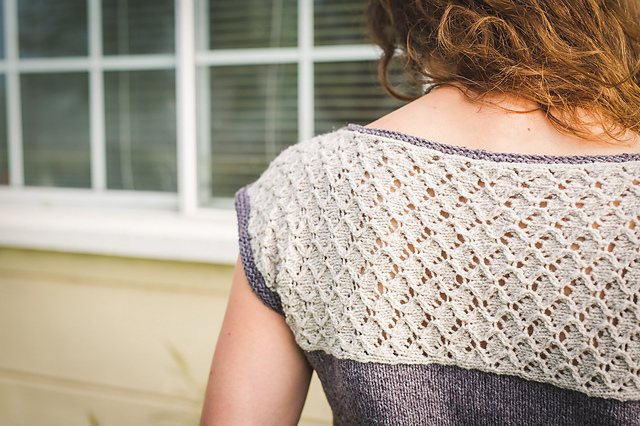

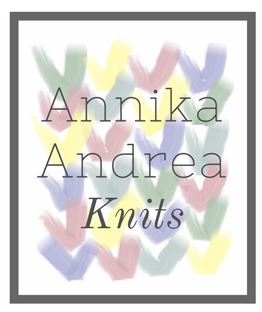
Thanks for all the lovely pattern suggestions and background on cotton. 🙂
LikeLike